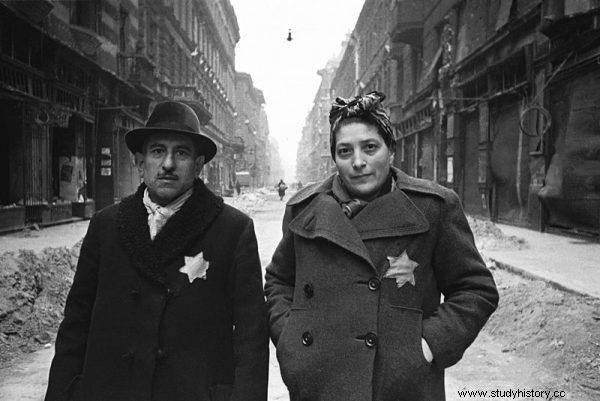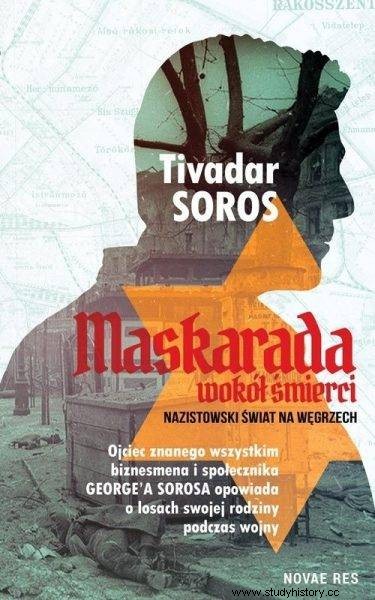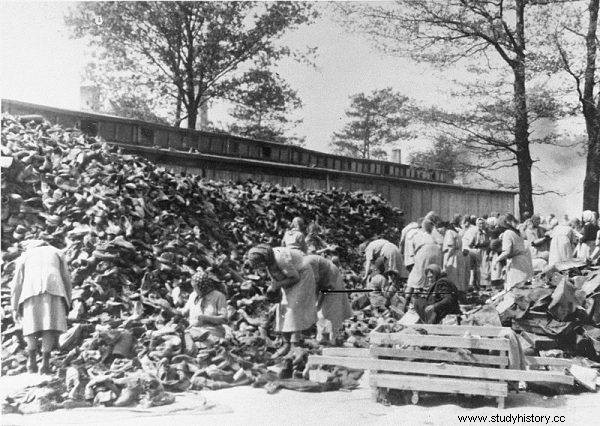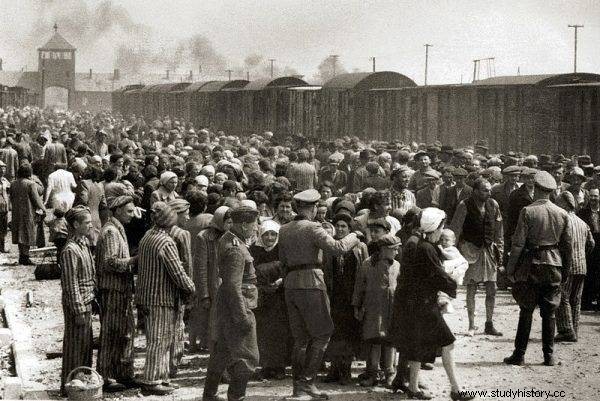They were the most numerous group of Auschwitz victims. Between March 1944 and January 1945, the Nazis murdered almost half of the Jews of Hungary in order to "make soap out of them with German pedantry."
In 1944, almost all Jewish communities in Europe ceased to exist. The exception was Hungary from 1940, formally remaining in the "pact with the devil" - the Nazi Third Reich. Although Budapest passed anti-Jewish laws to prove its loyalty to its ally, Hungarian Jews could feel relatively safe.
As a result, around 800,000 of them were still alive in the fifth year of the Danube War. After the Germans murdered most of the 3-million-strong Jewish community living in Poland, they were the most numerous enclave of representatives of the Mosaic faith. Until then.
Final solution of the Hungarian question
After several defeats of the Hungarian army, local authorities made ineffective attempts to establish contact with the Allied countries. When Hitler found out about it, he immediately blamed the Hungarian Jews for it and ordered the Wehrmacht to invade. As Timothy Snyder comments:
The German invasion of Hungary was an unusual operation, as its goal was to keep the allied state and army in the war on the side of the Reich.
The idea was not to force Hungary to implement the "final solution", but to change the course of Hungarian policy in a way that would enable it to be implemented. (…) New office [in Budapest - ed. aut.] calculated (...) that the deportation of Hungarian Jews was the price for the survival of the Hungarian state.

Even before the German entry, the Hungarian government adopted anti-Jewish laws.
The plan was ingeniously simple - it was enough to expropriate unwanted citizens and then remove them from sight. Its implementation began immediately. The "special forces" - Einsatzgruppe, the unit organizing the "final solution" in the east, and the head of the Jewish department at the Reich Central Security Office - Adolf Eichman were summoned to help.
"They didn't even shout"
Eichmann assured the leaders of the Hungarian Jewish community that, as long as the Jews cooperated, they would not face any repressions other than forced labor. The reality, however, was quite different. George Soros in the preface to his father's book, Tivadar Soros, “The Masquerade Around Death. The Nazi world in Hungary ”recalls:
The Germans occupied Hungary on March 19, 1944. We were liberated by the Soviets on January 12, 1945. During these ten months we lived in a sense of mortal danger. More than half of the Jews living in Hungary and a third of those living in Budapest died at that time.
"The Germans also intended to solve the Jewish problem in Hungary by the Nazi methods" - wrote Tivadar Soros on the pages of The Masquerade Around Death. To this end, they created almost 200 ghettos in the provinces, in which they imprisoned the Jewish population, and in the following months they were transported to death camps in the territories occupied by the Third Reich. As Soros commented:
It must be admitted that Secretaries of State Endre and Baky very quickly arranged for the deportation at a time when even the fascists and their urgent and important goals were scarce. Even in Nazi Germany there were no carriages at that time.

The text was created, among others based on the book by Tivadar Soros, The Masquerade Around Death. The Nazi World in Hungary ”, which has just been released by Novae Res.
A different tactic was used in the capital. Lest the world learn about the extermination, it was decided that there would be no ghetto in Budapest. The local Jewish Commission was commissioned to prepare a register of all Jewish apartments, and then the so-called "Jewish houses" marked on the front with a six-pointed yellow star. It has been calculated that there will be three to four people per room in the houses. Eventually the rooms had twice as many inhabitants.
Repressions also began. Timothy Snyder reports that at the peak of the shot, the crusaders (as the Nazis were called in Hungary) murdered around 50 Jews a day . As one of the heroes of Soros' book recalled:
We were lined up in rows around ten o'clock at night. Barefoot, in underwear, everyone had to stand in a row. We stood in pairs and our hands were tied with wire. There were fifty or seventy people, women, men and children (...).
We have come to the Danube. Two of us were put on the steps leading to the water. The guards fired at those standing lowest, and if any of them were only injured and did not fall into the Danube, they pushed him with the butt. Then the next couple went to the lowest step. There was no shouting; or I haven't heard.
"Technical" difficulties
The first transports to Auschwitz started at the end of April 1944. Their coordination was entrusted to SS-Hauptsturmführer Franz Novak. Almost 4,000 people came from the town of Topolya in Wowodina and the Kistarca camp near Budapest to the territories of German-occupied Poland. Over 486 men and 616 women were selected. The rest were directed straight from the railway ramp to the gas chambers. Dr. Piotr Setkiewicz, head of the Research Center of the Auschwitz-Birkenau Museum, says:
The camp authorities realized then that Auschwitz was not ready to receive the planned large number of deportees. It was then decided to suspend transports until the construction of the railway ramp inside the Birkenau camp was completed and other "technical" difficulties were removed. Then it was decided, inter alia, about restarting the makeshift gas chamber, the so-called the white house or digging pits for burning corpses.

Auschwitz prisoners sort shoes which most likely belonged to Hungarian Jews sent back immediately upon arrival at the gas chambers.
In mid-May, the deportation action gained momentum. In less than two months (until July 9, 1944), trains brought a total of about 420,000 Hungarian Jews to the Auschwitz 142 concentration camp. Dr Setkiewicz adds:
It is known from documents from a clothing warehouse in Birkenau that, as a result of a selection of transports of Jews from Hungary, the SS sent 52,000 Jews to the camp. men and, presumably, a similar number of women. This means that 325–330,000 people lost their lives in the gas chambers immediately after their arrival in Auschwitz. people.
Masquerade around death
About half of the Jewish population of Hungary survived the war. A significant part of the survivors owed their survival to international organizations and foreign diplomats operating in the country who issued passports to Jews from their countries and hid them in institutions subject to immunity. More than 30 have been honored with the title of Righteous Among the Nations.
Among them, the Swede Raoul Wallenberg stood out in particular. He bribed German and Hungarian officials to save people from transports, issued Swedish passports for about 10,000 people of Jewish origin. He even employed several hundred Jews in his embassy.

Selection of Hungarian Jews in Auschwitz.
On January 12, 1945, Hungary was liberated by the Red Army. The Nazis withdrew. It wasn't the end, however, as Tivadar Soros called it "masquerades around death":
People taken for "little work" were deported to the Soviet Union as prisoners of war. Soviet soldiers, like all soldiers, raped women. Hitlerism ended and life continued. Peaceful life did not come back. Under the Soviet occupation, people faced new dangers:regulated life, ideology, class struggle. It forced a new form of masquerade, new manipulations to make life possible.
